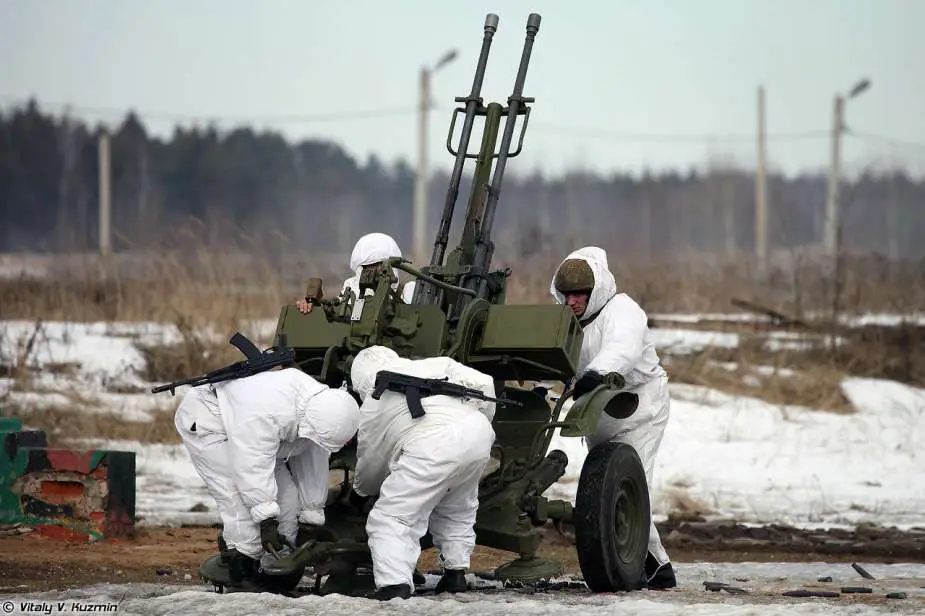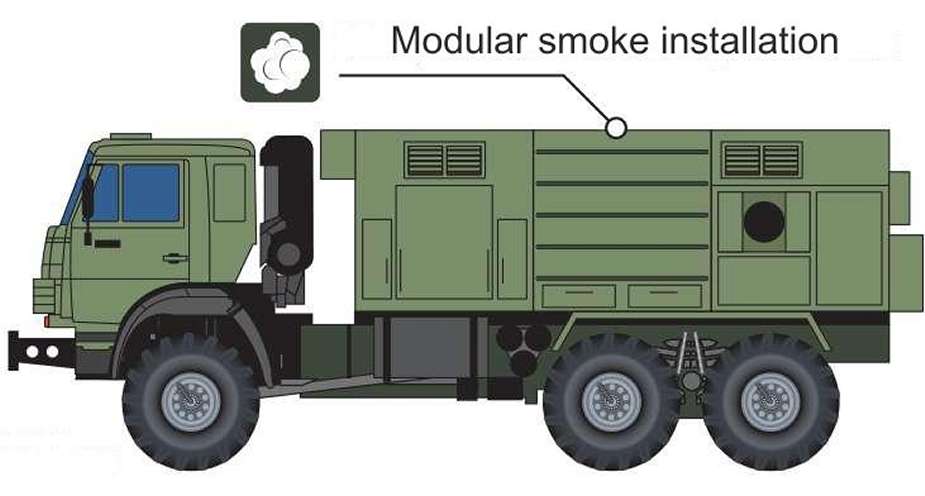Breaking News: Russia Deploys New Mobile Anti-Drone Units with ZU-23-2 Cannons in Ukraine
Russia has initiated new defensive measures to safeguard its troops against aerial drone threats on the Ukrainian battlefield, according to information from the Russian Ministry of Defense. These measures include the formation of special mobile anti-aircraft gun groups within several Russian combined arms armies, as well as within air force and air defense armies. Equipped with ZU-23-2 23mm automatic cannons mounted on truck chassis and pickup trucks outfitted with heavy machine guns, these units aim to offer cost-effective and efficient protection against drones. Military experts endorse the strategy for its affordability and effectiveness.
Follow Army Recognition on Google News at this link

The new Russian anti-drone mobile unit includes one pickup truck armed with one 12.7mm, one ZU-23-2 23mm anti-aircraft gun mounted on a truck, and one truck equipped with a smoke generator and electronic warfare equipment. (Picture source Izvestia)
The new Russian mobile anti-drone unit comprises a main vehicle, which includes a pickup truck armed with a 12.7mm machine gun serving as the command post. Accompanying this is a 6x6 truck equipped with a ZU-23-2 23mm anti-aircraft cannon system, mounted at the rear of the truck chassis. Additionally, there is a thermal screen installation system, also mounted on a 6x6 truck chassis.
The ZU-23-2 anti-aircraft gun, which the Soviet Union developed in the late 1950s, features a distinctive design with dual 23mm automatic cannons. Its deployment across the globe, particularly among nations that were either aligned with or are successors of the Soviet Union, is a testament to its effectiveness in neutralizing low-flying targets such as helicopters and aircraft. In recent years, it has also been adapted to counter unmanned aerial vehicles (UAVs), or drones, which have become a common element in modern warfare.
With an effective engagement range of up to 2.5 kilometers and a ceiling of 1.5 kilometers for aerial targets, the ZU-23-2 is particularly adept at addressing threats from UAVs, which often operate within these altitudes. The gun fires various types of 23mm ammunition, including high-explosive incendiary (HEI), armor-piercing (AP), and tracer rounds. This versatility allows it to tackle a broad spectrum of targets, extending its utility beyond air defense to include engaging light armored vehicles and infantry.
The practice of mounting the ZU-23-2 on a light truck chassis significantly augments its operational flexibility and mobility. This adaptation provides several strategic benefits, especially in the context of combating drones. The mobility of a truck-mounted system ensures that the anti-aircraft guns can be swiftly repositioned in response to the evolving dynamics of the battlefield or to address UAV threats emanating from various directions. The capability to rapidly alter gun positions introduces an element of unpredictability and dynamism into defensive patterns against drones, which are frequently utilized for reconnaissance and are known to adjust their flight paths based on observed static defense placements. Furthermore, the rapid deployment and retraction capability afforded by mounting the gun on a light truck enhances the survivability of the weapon system itself, enabling forces to mitigate the risk of being targeted by counter-battery fire or more sophisticated aerial threats. This strategic mobility, combined with the ZU-23-2's firepower, makes it an invaluable asset in modern warfare, particularly in environments where UAVs play a pivotal role in reconnaissance and combat operations.

The ZU-23-2 is a Soviet-era towed anti-aircraft twin-barreled autocannon designed for engaging low-altitude targets. (Picture source Vitaly Kuzmin)
A key feature of the new Russian anti-drone unit is the integration of electronic warfare equipment and smoke production vehicles. These vehicles are capable of generating a thermal smoke curtain that is impenetrable to both optical-electronic systems and the thermal imagers of Unmanned Aerial Vehicles (UAVs).
The strategic use of electronic warfare equipment and smoke production vehicles offers significant tactical advantages on the modern battlefield, particularly in countering the increasing threat posed by Unmanned Aerial Vehicles (UAVs). Electronic warfare equipment can jam or disrupt the communication and navigation systems of incoming drones, rendering them ineffective or deviating from their intended targets. This not only protects high-value assets from potential drone strikes but also conceals the movements and positions of friendly forces. Meanwhile, smoke production vehicles complement these electronic countermeasures by deploying a thermal smoke curtain. This curtain effectively shields areas from the prying eyes of optical and thermal imaging devices on drones, making it difficult for enemy forces to acquire and engage targets. Together, these capabilities enable forces to operate with a greater degree of security and flexibility, disrupting enemy surveillance and attack capabilities while concealing their own maneuvers and preparations.
The resurgence of anti-aircraft gun artillery, particularly in combating small UAVs like FPV drones, represents a tactical evolution prompted by the cost-effective ratio of drone ammunition. This shift underscores a return to traditional anti-aircraft artillery as a logical response to the challenges posed by smaller targets.
For maximum efficiency, these anti-aircraft installations require precise detection capabilities and support from electronic and optical interference systems to counter the optical-electronic guidance utilized by strike drones. According to military expert, creating a smoke screen can disorient the drone operator, while electronic warfare tactics aim to sever or disrupt the control link between the operator and the drone.
Military expert, also highlighted the necessity of diverse methods to counteract drone threats, including the strategic deployment of mobile groups armed with ZU-23-2 23-mm anti-aircraft guns and machine guns. This approach, informed by combat experiences and the use of drones in large numbers, offers a cost-effective solution to a growing challenge, marking a significant adaptation in modern military strategy.

The new Russian mobile anti-drone unit incorporates electronic warfare tools and smoke generators mounted on a 6x6 truck chassis for enhanced battlefield defense against aerial threats.
Defense News March 2024
- Hits: 10511
















